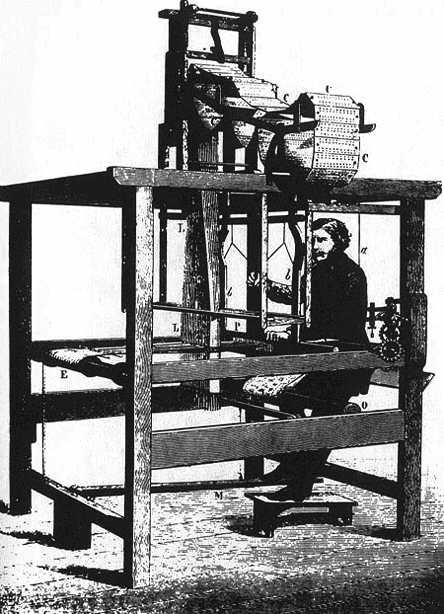Jacquard Loom
Invented by Joseph Jacquard and demonstrated in 1801, the Jacquard Loom is an attachment for powered fabric looms. It uses a chain of punch cards to instruct the loom on how to make intricate textiles. For example, a loom could have hundreds of cards with holes corresponding to hooks that can be raised or lowered to make a textile brocade. Below is an illustration of the Jacquard Loom attachment on top of a textile loom.

The Jacquard Loom is important to computer history because it is the first machine to use interchangeable punch cards to instruct a machine to perform automated tasks. Having a machine that could perform various tasks is similar to today's computer programs that can be programmed to perform different tasks. The Jacquard Loom was also an inspiration to Charles Babbage planning to use perforated cards in his analytical engine. Herman Hollerith also used the idea of punch cards to not only store information, but to input information into a computing device, helping to create the company IBM.
Today's textile looms no longer use punch cards. Instead, they can use a digital scanner to create a pixelated digital version of any image. This digital version creates instructions for the loom to make a textile version of the scan.
The Jacquard Loom was not the first loom to use punch cards. In Lyon, France, Basile Bouchon invented a loom in 1725 that used a perforated paper tape roll that was later upgraded in 1728 by his assistant Jean-Baptiste Falcon to use punched cards. Although this loom predates the Jacquard Loom, it was not fully automated.
